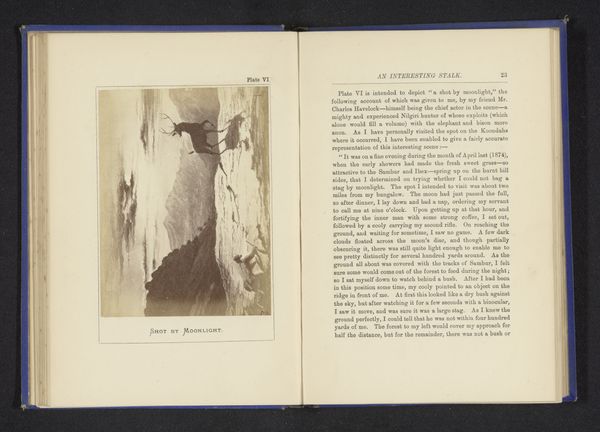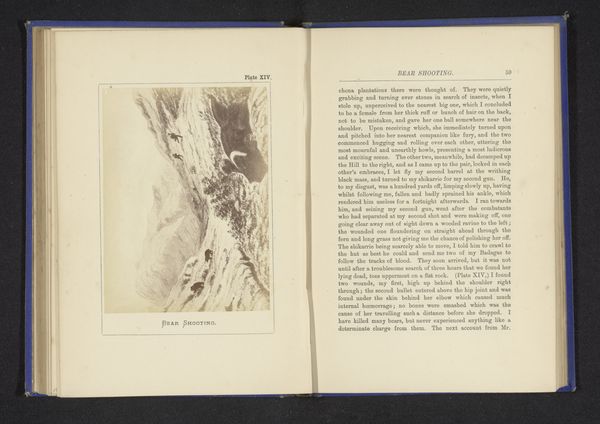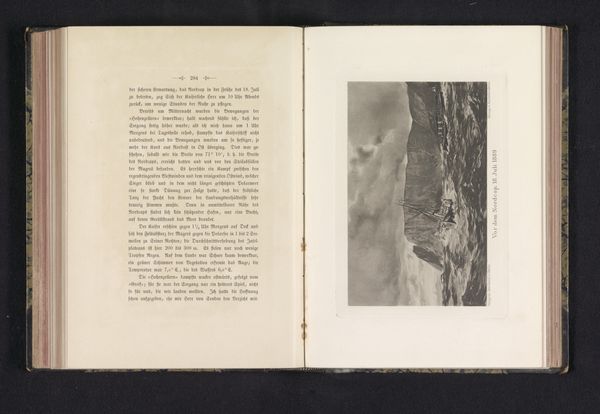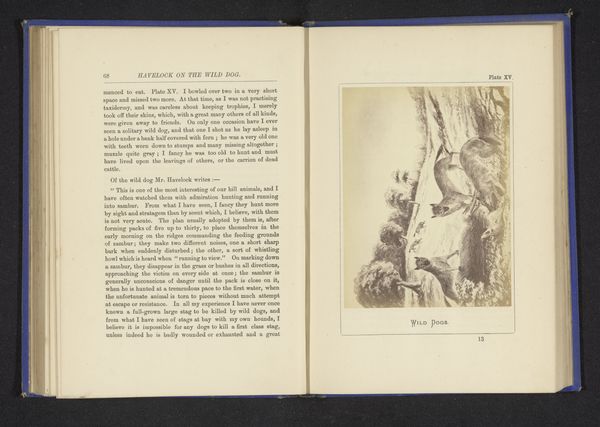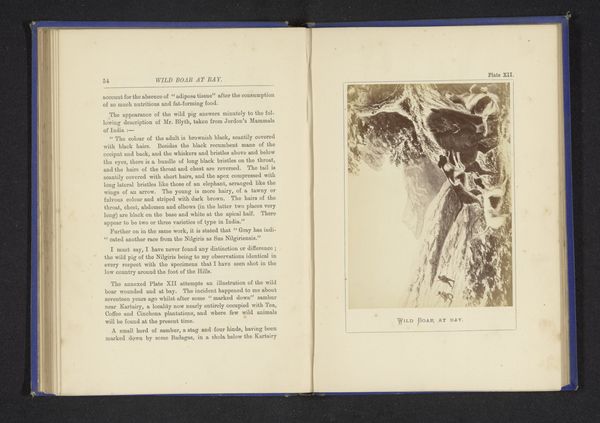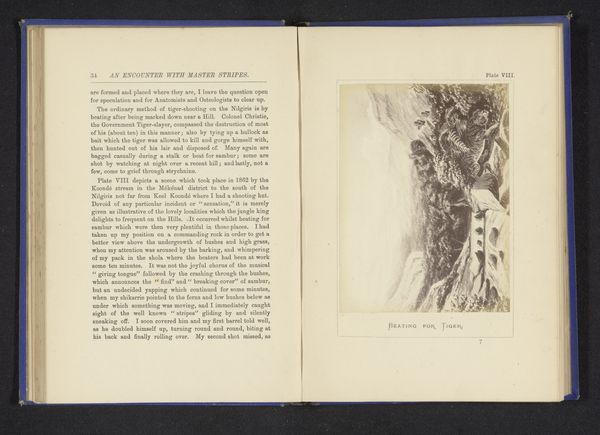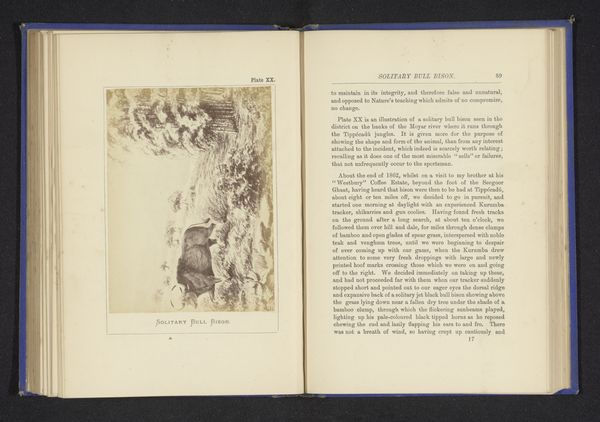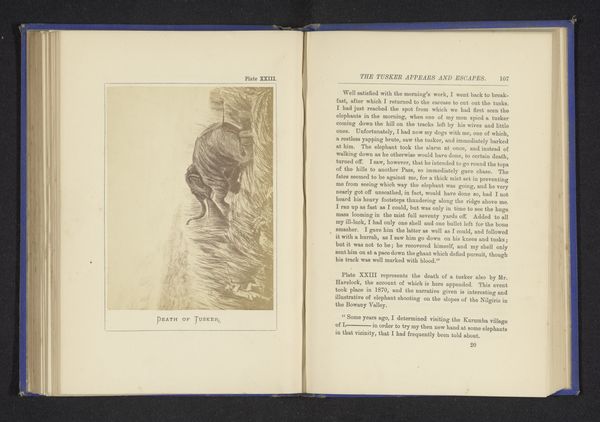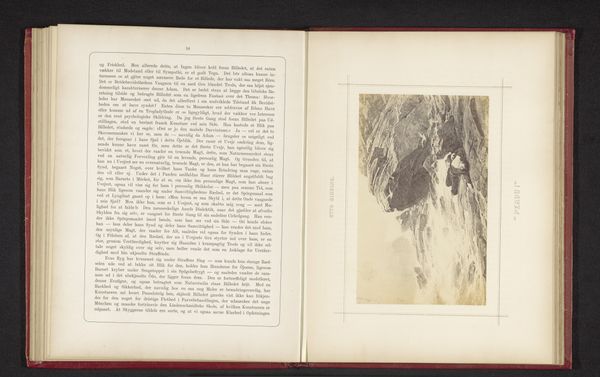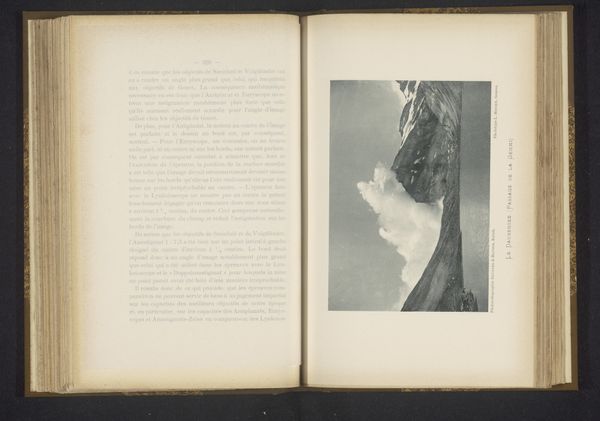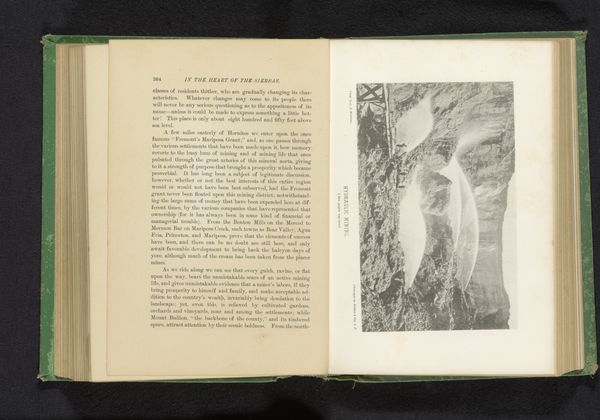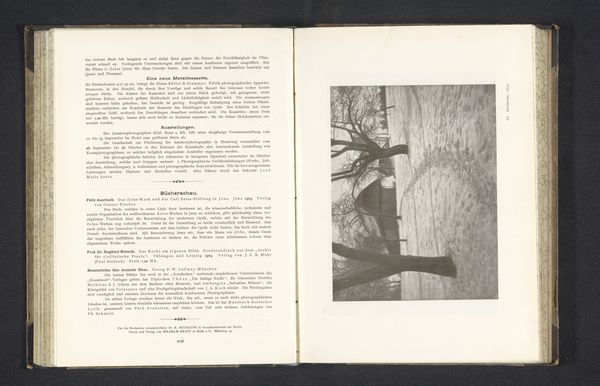
Fotoreproductie van een tekening van een luipaard die naar een val van jagers loopt before 1880
0:00
0:00
drawing, print, photography, gelatin-silver-print
#
drawing
# print
#
landscape
#
photography
#
gelatin-silver-print
Dimensions: height 98 mm, width 132 mm
Copyright: Rijks Museum: Open Domain
Curator: Let’s delve into this photograph, a gelatin-silver print titled "Fotoreproductie van een tekening van een luipaard die naar een val van jagers loopt" – or roughly translated, "Photographic reproduction of a drawing of a leopard walking into a hunter's trap," created before 1880 by Nicholas & Co. What are your first thoughts? Editor: It's fascinating, in a rather bleak way. You see the constructed trap juxtaposed with the wild animal and its natural environment. What draws me in most is thinking about how the physical processes in both sites come together to produce this final product. What's your take? Curator: For me, this image opens up conversations around labor and materiality. Think about the physical effort of creating the trap. This wasn’t just a matter of acquiring materials; it involved considerable knowledge and skill. And what kind of labor did Nicholas & Co. invest in taking the photo of this trap and its illustrated inhabitants? Do you see a difference between "high art" and craft here? Editor: That’s a great question, because I do and don't! The hunting trap is undoubtedly utilitarian, and its construction reflects specific skills related to trapping, but doesn't that also speak to certain craft traditions? And then you have the “high art” aspect in that photograph created by the company...the plot thickens. Curator: Precisely. It challenges the rigid divisions we often impose. What resources were available to whom? What are we consuming in this image, besides visual information? The labour? The leopard's doom? Consider also the chemical processes, the gelatin-silver printing that has, over time, turned from art to antiquated method, to then maybe find its own aesthetic or significance again... How might the lifespan of the photograph as an object factor into our understanding? Editor: I didn’t consider that before, but now it is impossible for me to see anything else. I suppose analyzing the piece in this manner has deepened my appreciation for both its content and the context of its creation. Curator: Indeed. This artwork underscores the interconnectedness of materials, labor, and consumption – reminding us that even images participate in the flow of resources and meaning within a given society.
Comments
No comments
Be the first to comment and join the conversation on the ultimate creative platform.
